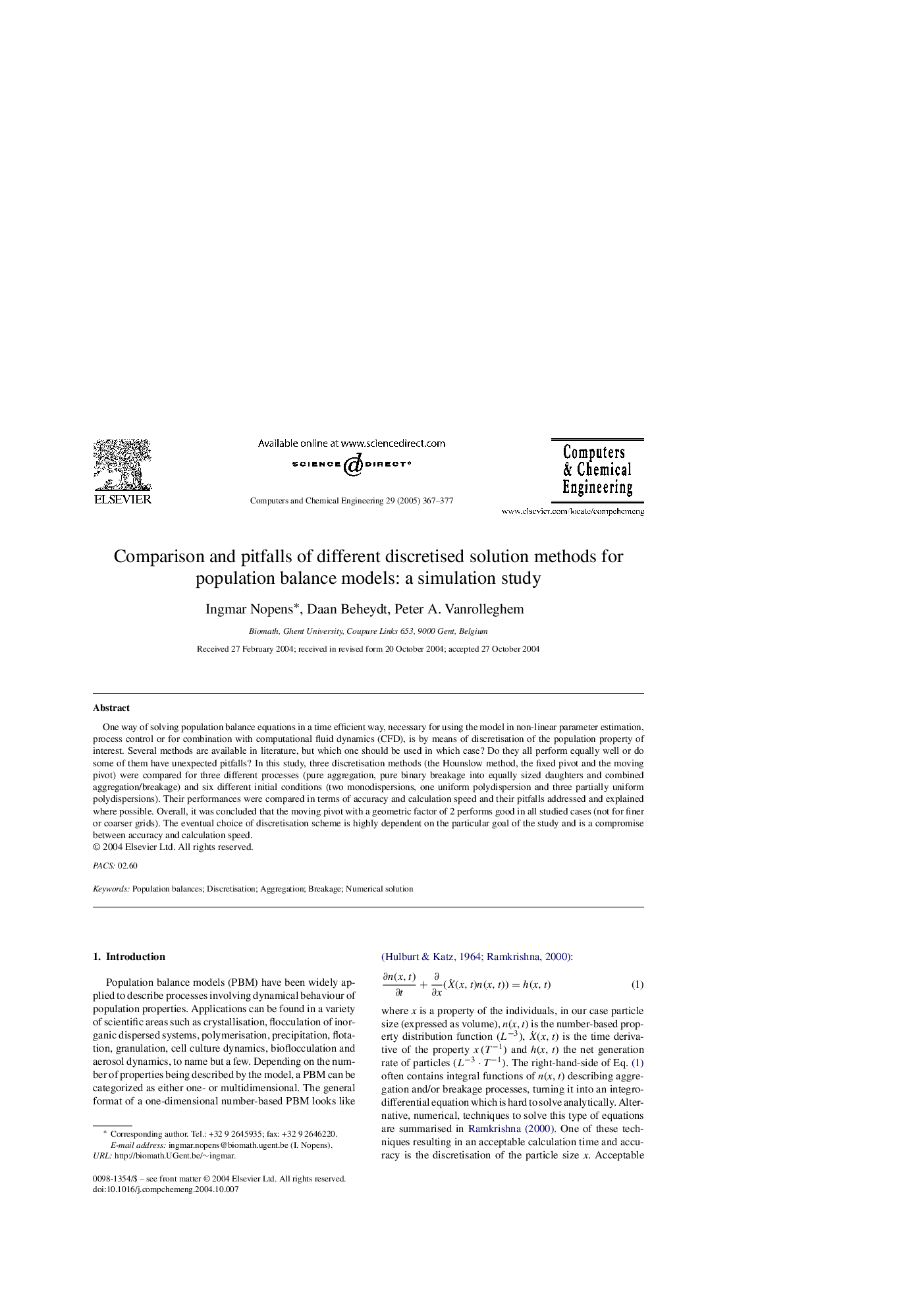| Article ID | Journal | Published Year | Pages | File Type |
|---|---|---|---|---|
| 10265956 | Computers & Chemical Engineering | 2005 | 11 Pages |
Abstract
One way of solving population balance equations in a time efficient way, necessary for using the model in non-linear parameter estimation, process control or for combination with computational fluid dynamics (CFD), is by means of discretisation of the population property of interest. Several methods are available in literature, but which one should be used in which case? Do they all perform equally well or do some of them have unexpected pitfalls? In this study, three discretisation methods (the Hounslow method, the fixed pivot and the moving pivot) were compared for three different processes (pure aggregation, pure binary breakage into equally sized daughters and combined aggregation/breakage) and six different initial conditions (two monodispersions, one uniform polydispersion and three partially uniform polydispersions). Their performances were compared in terms of accuracy and calculation speed and their pitfalls addressed and explained where possible. Overall, it was concluded that the moving pivot with a geometric factor of 2 performs good in all studied cases (not for finer or coarser grids). The eventual choice of discretisation scheme is highly dependent on the particular goal of the study and is a compromise between accuracy and calculation speed.
Related Topics
Physical Sciences and Engineering
Chemical Engineering
Chemical Engineering (General)
Authors
Ingmar Nopens, Daan Beheydt, Peter A. Vanrolleghem,
